The verdict: The redesigned 2018 Kia Rio is a solid, city-friendly subcompact car that doesn’t wear you out on a long commute or weekend road trip like many of its breed do.
Versus the competition: Higher trim levels offer more features, if less of a price edge, than the notably discounted base 2018 Rio, which is a substantially improved competitor overall.
The smallest cars on the market are getting less respect from U.S. shoppers these days even as the cars themselves are getting a lot more respectable.
Case in point: the redesigned 2018 Kia Rio subcompact sedan and hatchback. It's a little bigger, nicer to be in and drive, and even a little cheaper than the 2017 version. It's a "real car" — small enough for urban parking and crowded streets, but capable enough to make a long commute or weekend road trip a pleasant experience. But the U.S. has always been a tough market for subcompacts, and they face stiff competition for attention these days from the more fashionable group of subcompact SUVs even though sedans and hatchbacks offer better handling, great efficiency and lower prices.
It was markets outside the U.S. that made a new-generation Rio the right move for Kia: It's the brand's best-selling vehicle worldwide, with 400,000 sold in 2016. It's been particularly successful in Europe, so it's no accident the new Rio has a European flavor in its new design and driving manners.
The redone 2018, which will go on sale later this fall, will offer three trims: a base LX, top EX and new mid-range S trim. The old top trim, the SX, is gone.
It’s a “real car” — small enough for an urban buyer but capable enough to make the occasional road trip reasonably pleasant.
I tested a new Rio in and around Baltimore, on cobbled city streets, freeways and rural roads, and at a Kia-hosted introduction. (Per our ethics policy, Cars.com pays for its own airfare and lodging at such events.) I drove the top-trim EX hatchback; lower trims and the sedan were available to view but not to drive.
Grown-Up Looks
While some subcompact cars try too hard to be cute or funky, the new Rio does its best to look like a grown-up compact car. New conservative, horizontal lines aim to make the car look longer and wider than it is (in fact, it's only slightly longer, lower and wider than the 2017). The redone Kia "tiger nose" grille is stretched thin and wide, and the headlights pull away around the corners. Vertical side vents at the front bumper corners accentuate the Rio's stance, and the new taillights and rear bumper also pull visually to the corners to add width.
The hatchback's horizontal roof seems to blend best with the overall look. The sedan has a sleeker fastback roof, but it ends — as is the case on many so-small sedans — in a bustle that looks stubby and chopped-off. The grown-up look would be enhanced if the new Rio were fitted with the 17-inch wheels offered in Europe rather than the kiddy-car 15s (alloy on the EX) that U.S. models sport.
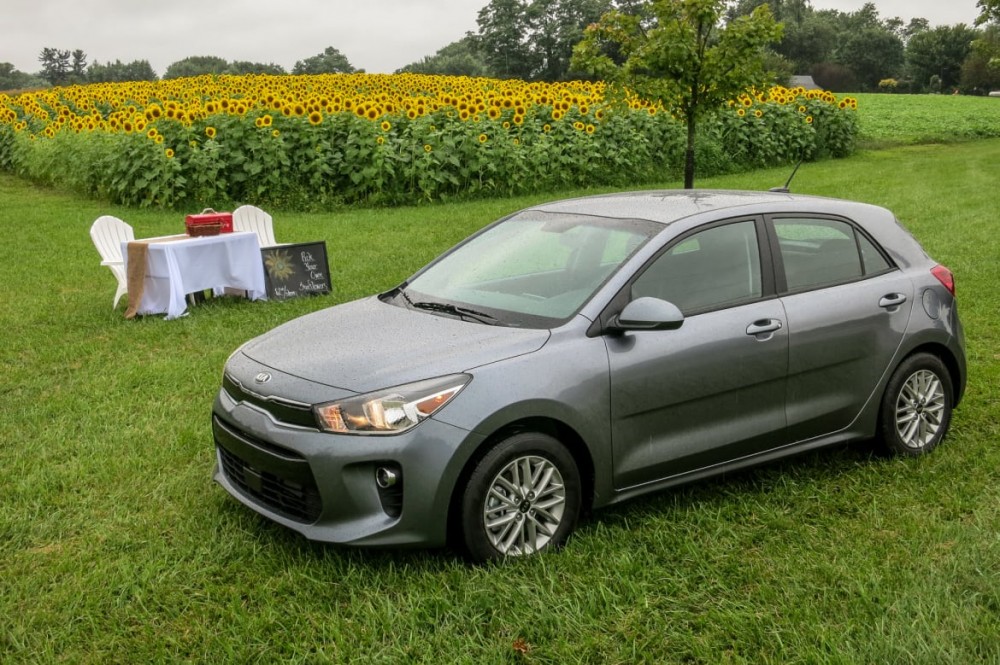
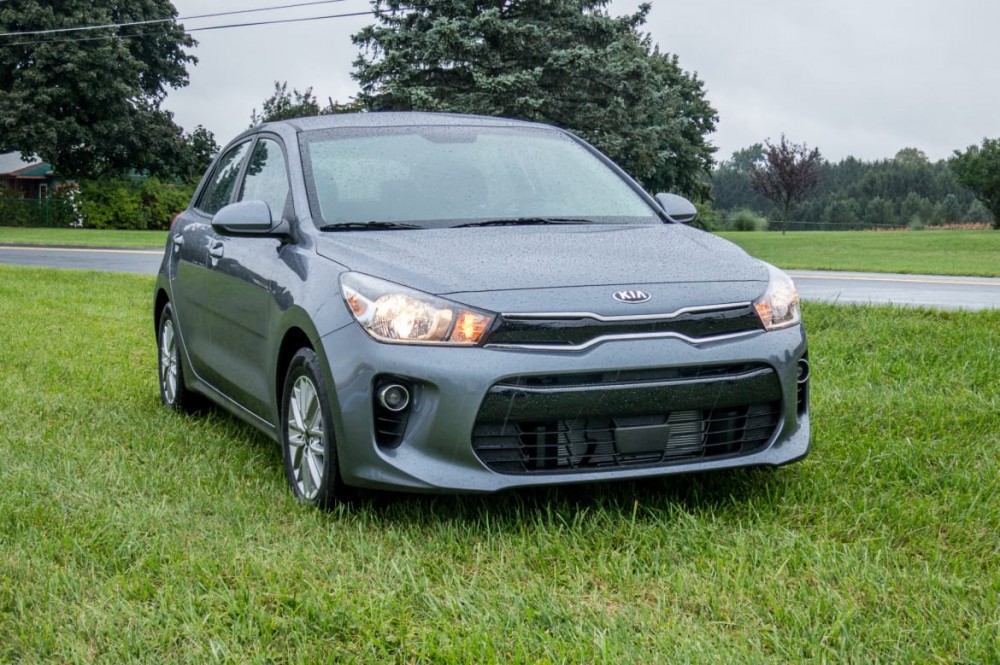
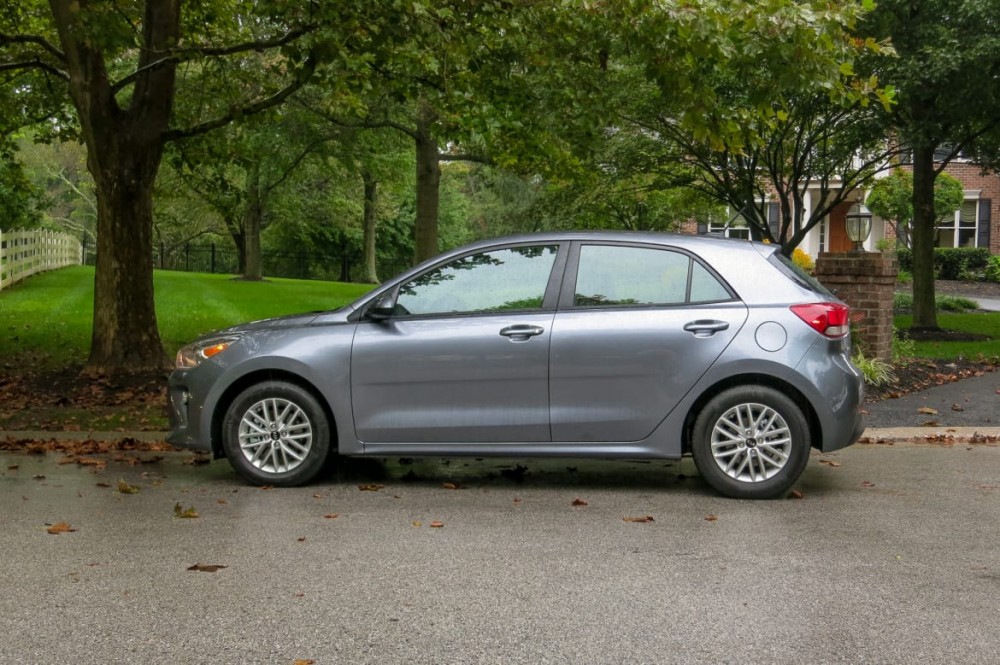
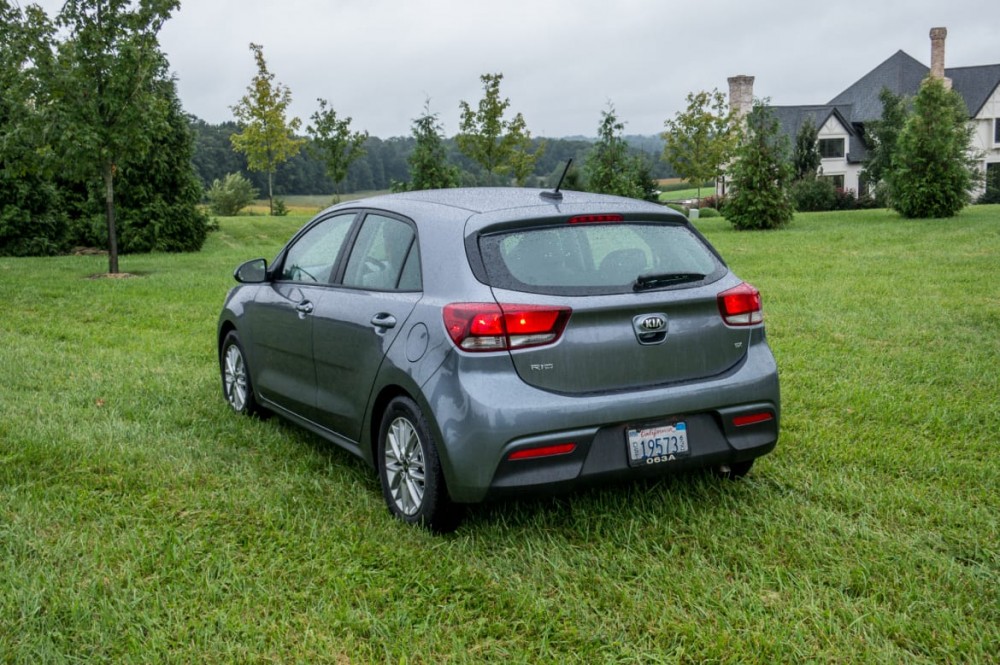
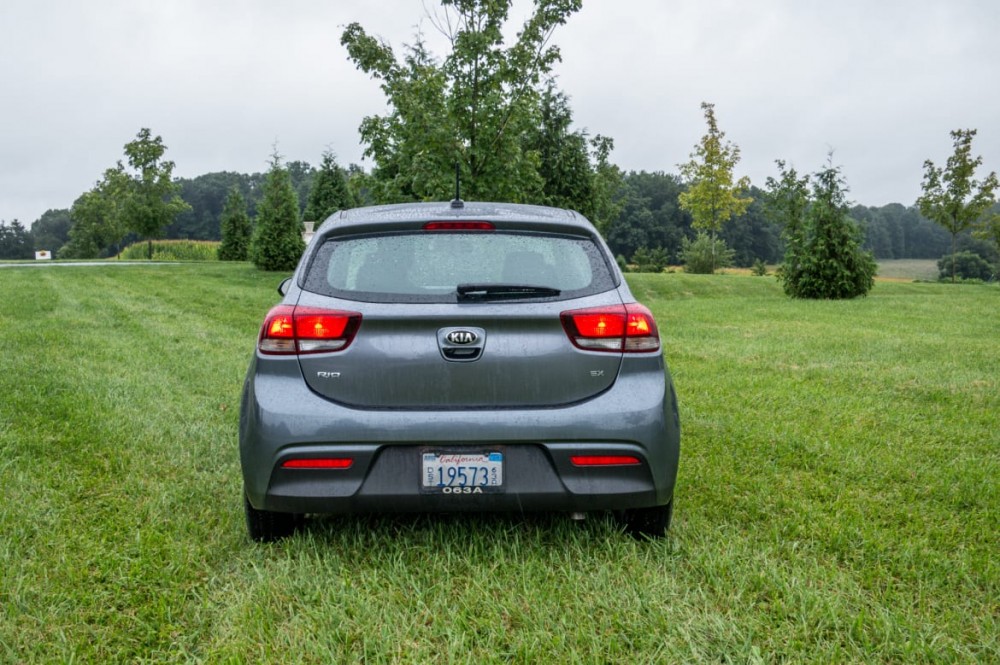
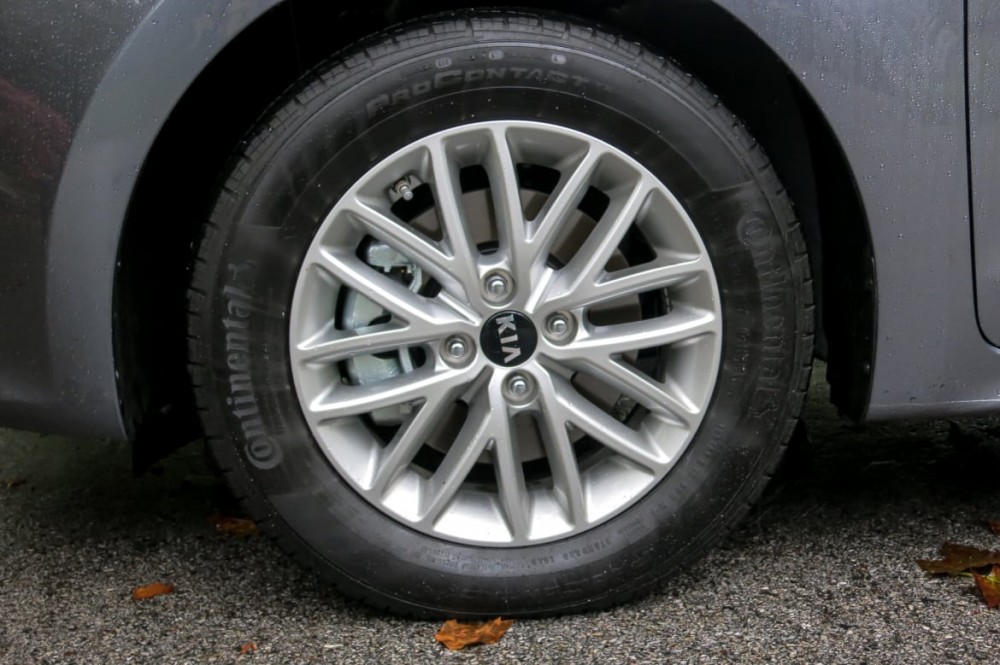
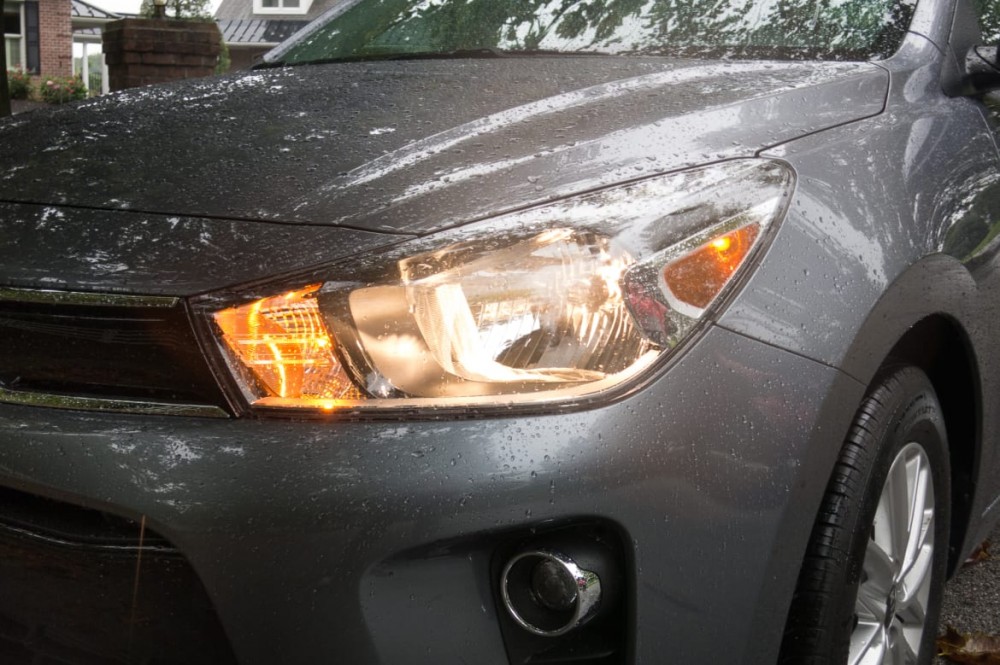
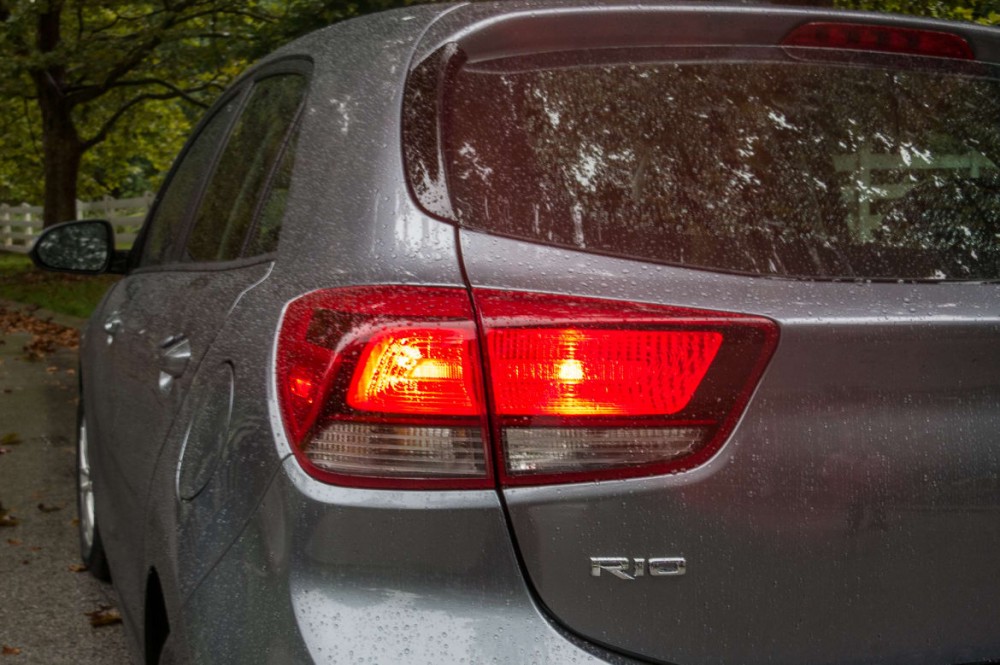

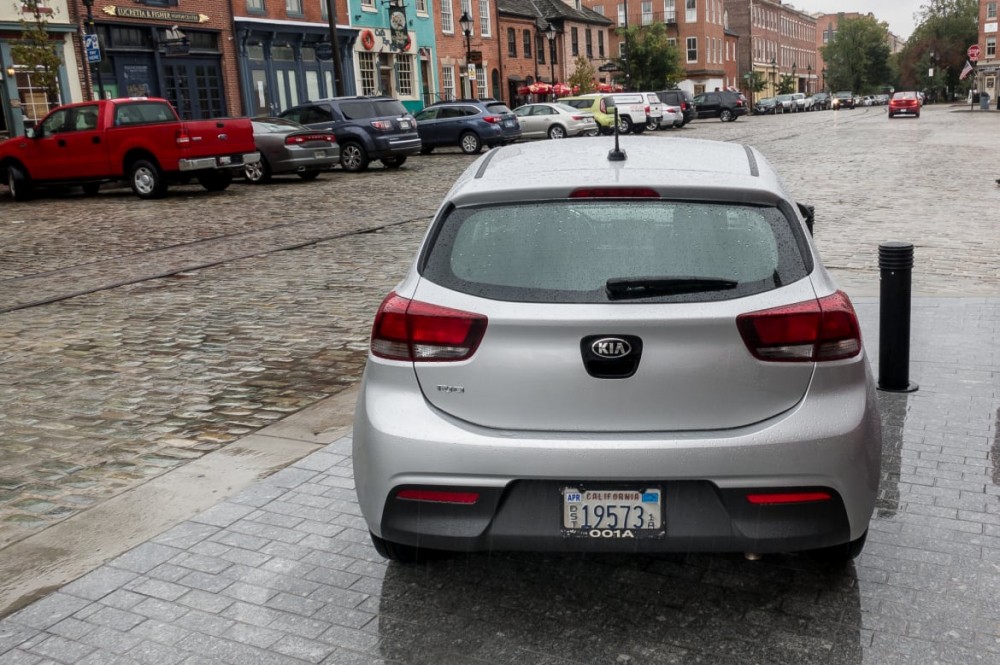
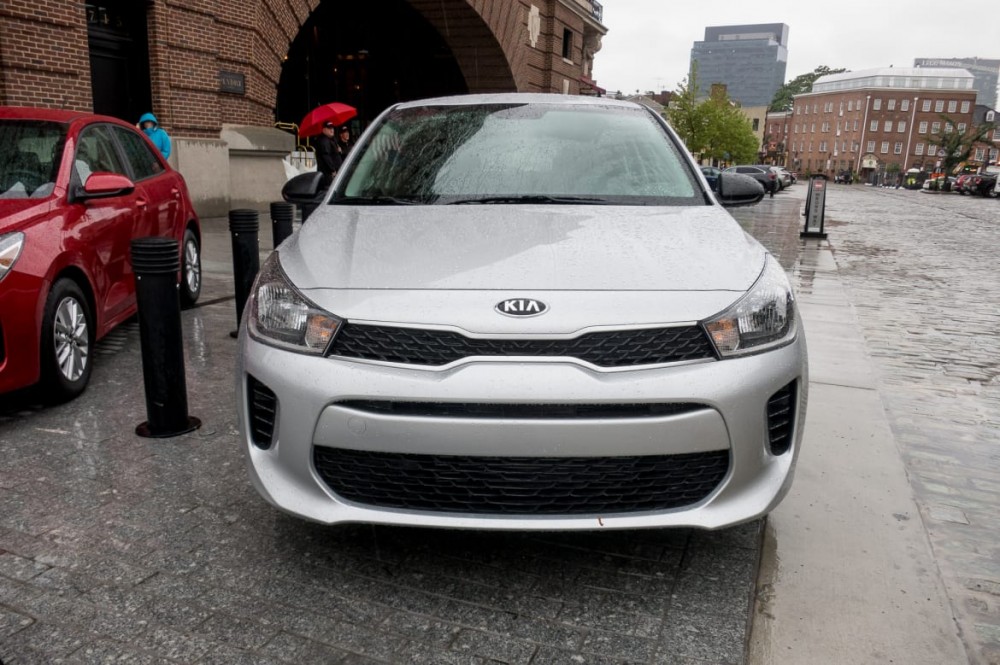
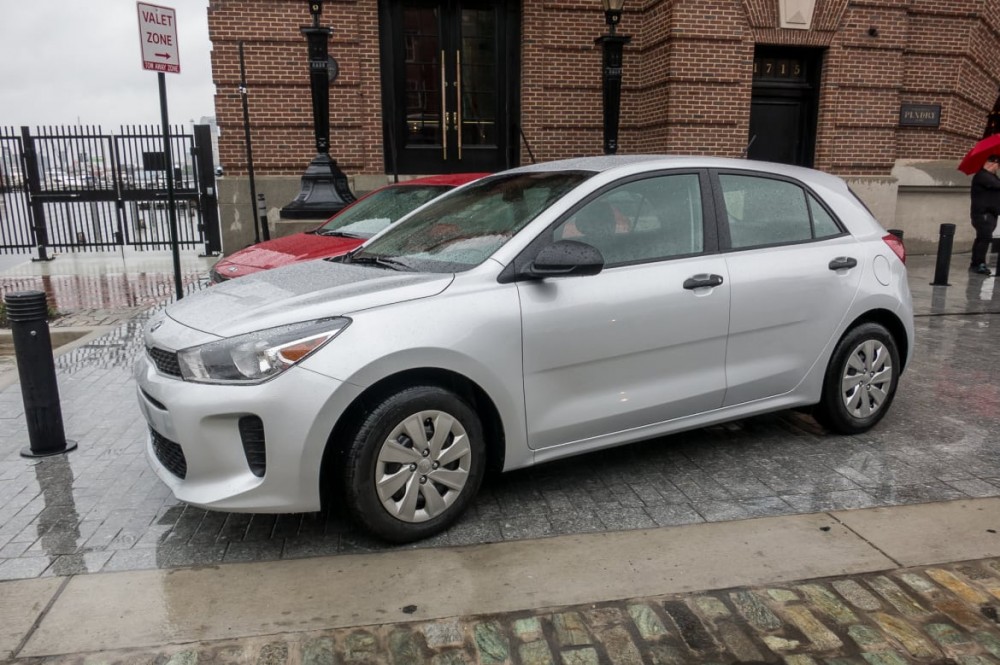
The Euro-horizontal theme continues inside with a simplified dashboard that extends wide and low, enhancing the little Rio's feeling of space. While the bare-bones base model is, as expected, loaded with molded plastic, its cloth upholstery seems durable. S and EX trims bring better materials and textured plastic, and the look and feel of the cloth upholstery is an improvement over the 2017, better rivaling the competition. The vehicle I drove was an EX Launch Edition, which had upgrades like red leather accents ($500). It was a cut above the others and is worth considering, though Kia says availability will be limited to 1,000 cars.
Unexpected Comfort
The Rio cabin proved unexpectedly comfortable for a long day in a subcompact car. Kia said it worked to make the new Rio's cabin more comfortable and less fatiguing for commuting and trips. The front seats — a weak point in the past model — have more cushion and better support. And there are enough adjustments in the EX to find a just-so position, including a height-adjustable driver's seat, long seat travel and a telescoping steering wheel. Note, however, that achieving this perfect fit for a 6-foot-2 driver pretty much eliminated the usefulness of the already-tight backseat.
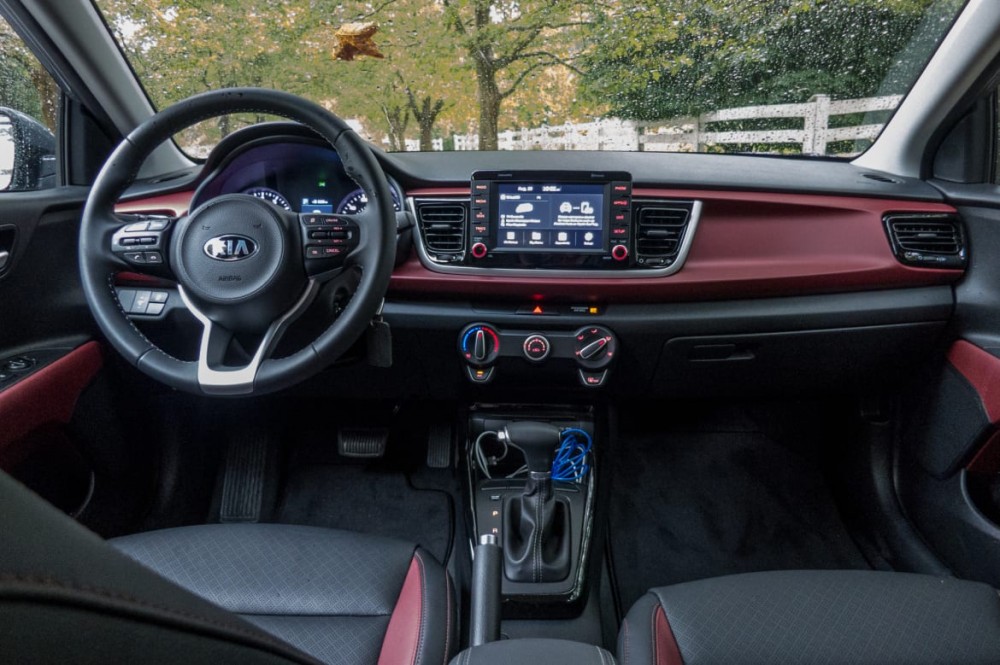
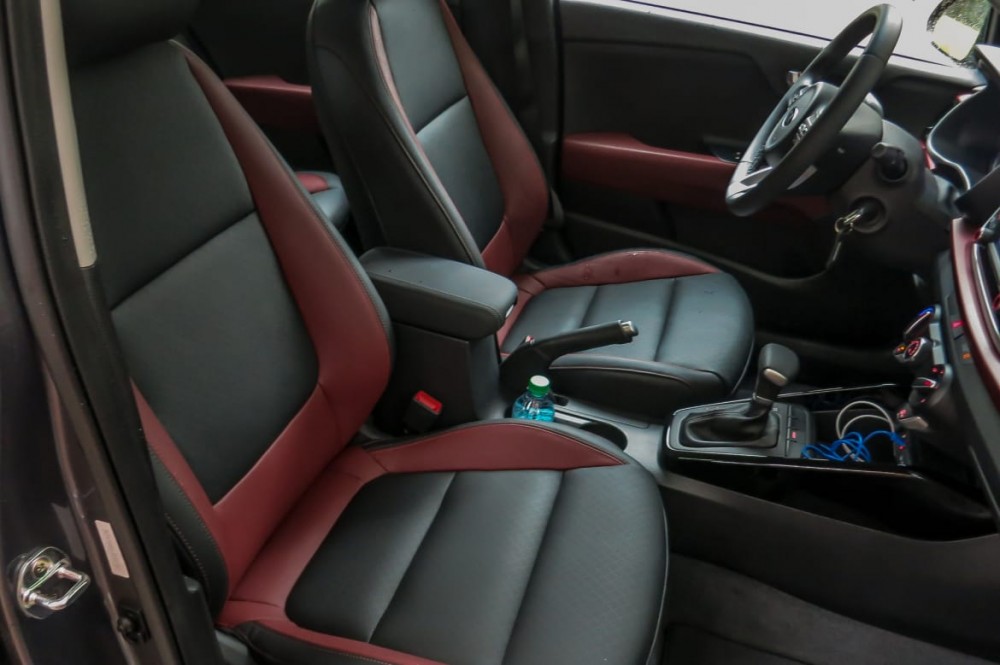
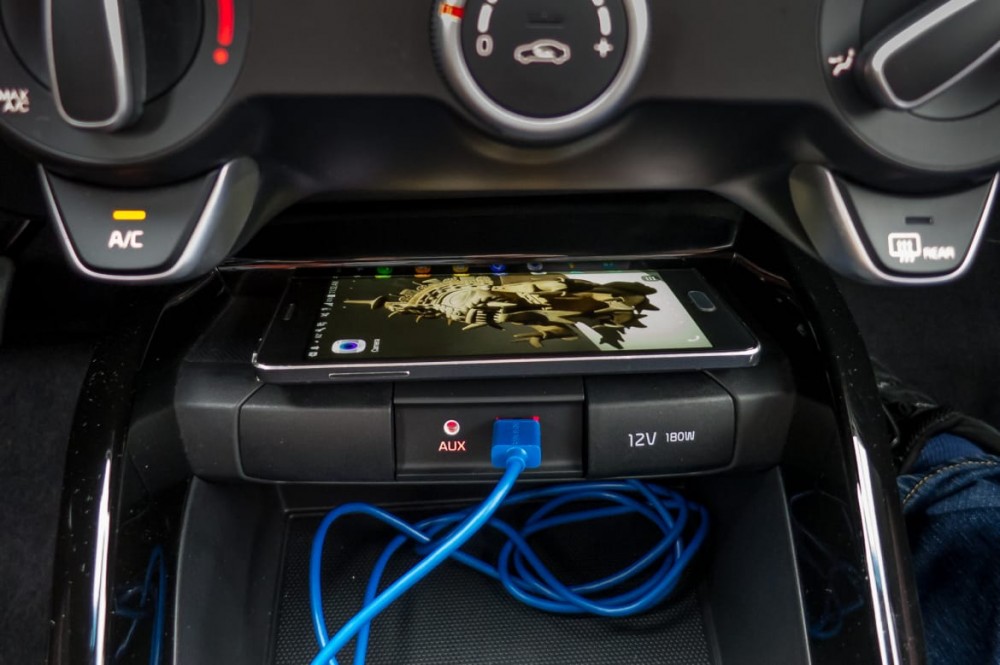
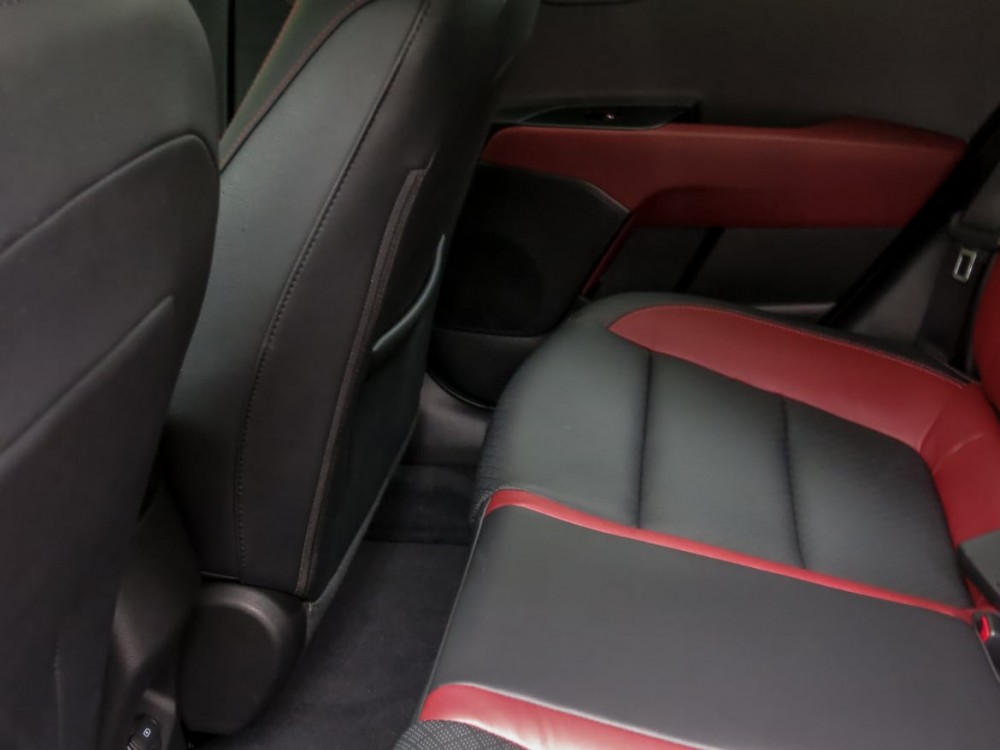
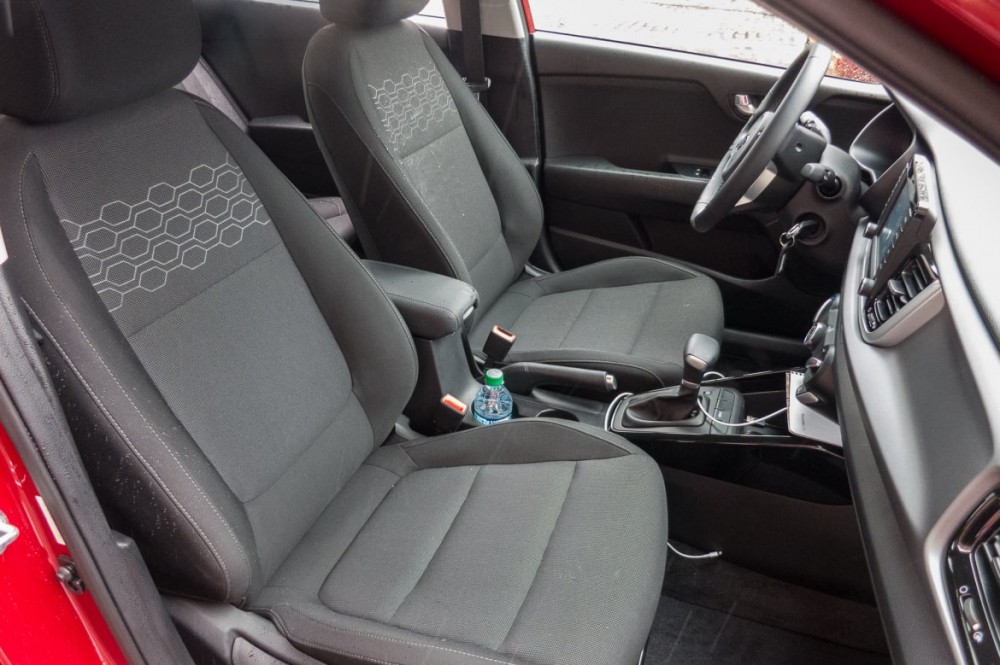
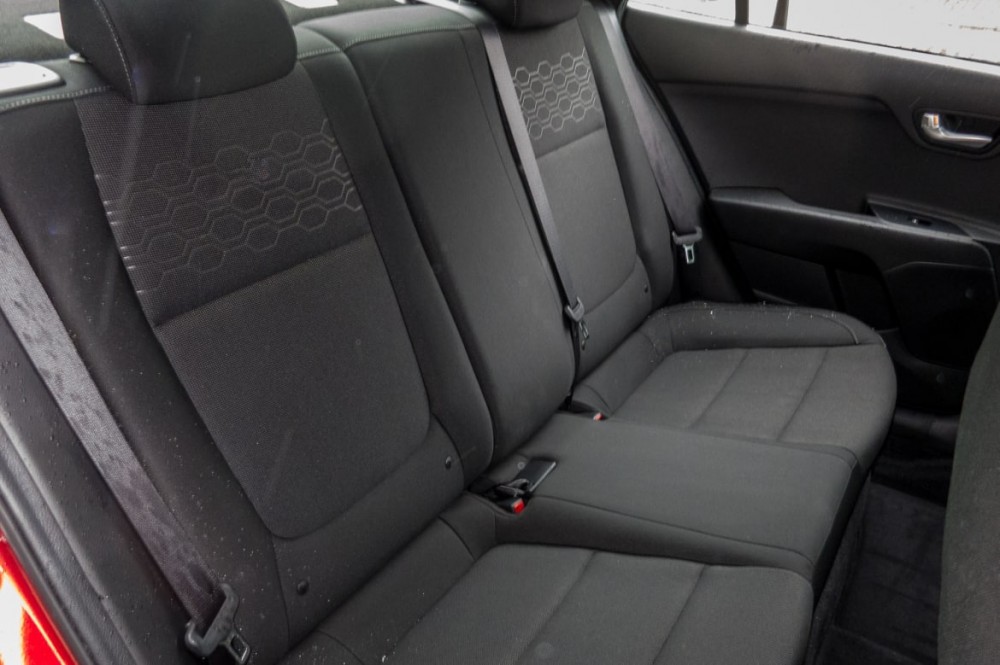
Sound levels aren't whisper-quiet, but they're far below the fatigue-inducing levels you find in some rivals, even in rainy conditions that increased road noise. The engine is quiet at idle thanks to new mounts, and while it gets buzzy when pushed, it didn't intrude at cruising speeds thanks to gearing that keeps it below 2,000 rpm at 55 to 60 mph. Kia also added extra bracing in the hatchback's rear floor that did a good job of cutting the open-cabin drumming you hear in many hatchbacks.
Stable and Confident
The Rio rides on a new, stiffer platform with a new suspension. The combination gives it a solid, stable feel despite its city-car size and weight of about 2,700 pounds. The ride is firm and sometimes a little choppy, but never harsh or fatiguing, and cornering is controlled. You feel the bumps but aren't battered by them.
The overall effect is composed, even when pushed around in poor weather conditions that would have you biting your nails in many subcompacts. Kia says the suspension tuning — struts in front and a cost-saving semi-independent torsion beam in the rear — was dialed back a bit in firmness for U.S. roads, but not as much as for Asian markets. Stopping power was strong and linear in the EX test car, which had disc brakes all around. For 2018, LX and S trims get drums in the rear.
A revised 1.6-liter four-cylinder engine provides sufficient punchiness in traffic and seems well-matched with the six-speed automatic transmission. (A six-speed manual is available but only on the base LX). The transmission shifted smoothly, if not always crisply, and willingly downshifted to deliver power as needed — more so in the EX's Sport mode — such as when a driving partner had to get around a semi on a slight grade at 65 mph. Overall, the Rio delivers an experience that plays above its size and price and is more engaging than most rivals, such as the Nissan Versa — though it's not quite up to Ford's feisty Fiesta.
Revisions to the four-cylinder engine drop horsepower by 8, to 130 hp, and torque by 4 pounds-feet, to 119, though Kia says power delivery now is better than the 2017 at lower engine speeds. New tuning also squeezes out slightly higher fuel economy than in 2017: Ratings for 2018 are 29/37/32 city/highway/combined for manual models and 28/37/32 mpg for automatics. Compare those with 2017 here.
The new estimates put the Rio's combined rating ahead of some rivals, such as the Fiesta, but it's still short of fuel-miser leaders like the Honda Fit and Versa. Compare those cars' automatic-equipped versions here.
A Little Urban Hauler
Kia sees the hatchback, expected to be about a third of sales, as a practical choice for a young buyer's one and only car. If its specifications are correct, the hatchback will be a class leader with a useful 17.4 cubic feet of space for gear behind the backseat, or 32.8 cubic feet with the 60/40-split folding rear seat down (it's standard on all hatchback trims). That utility is boosted by a bigger, wider liftgate and a new rear suspension that makes for a wider, flatter load floor. Hauling ability and space is as good or better than the competition; even the otherwise roomier Fit has just 16.6 cubic feet behind the backseat.
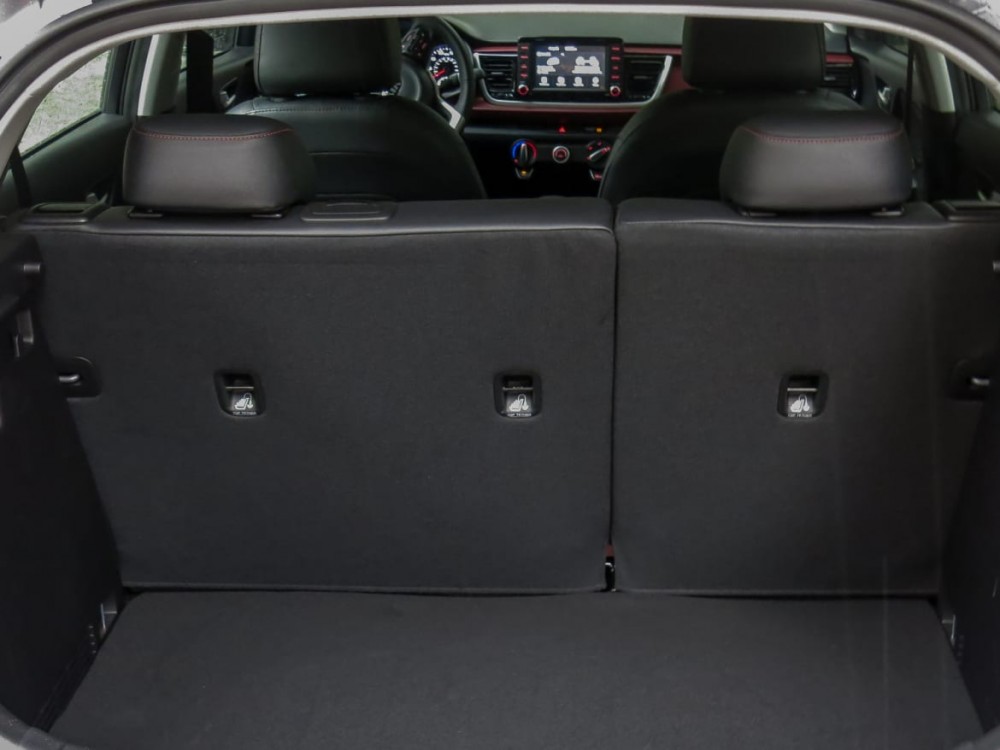
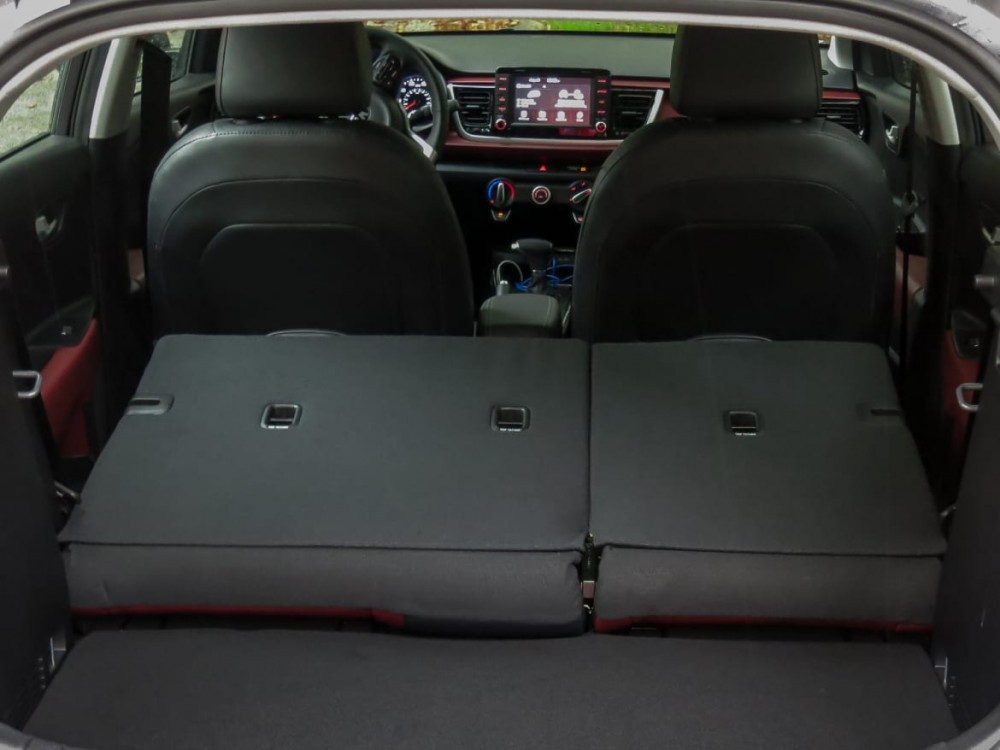
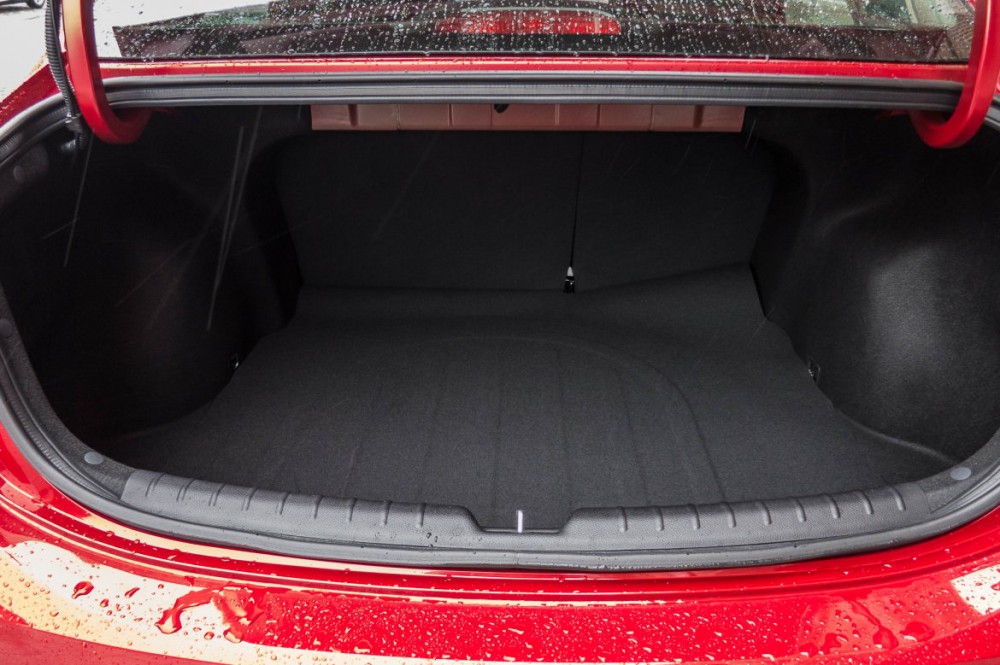
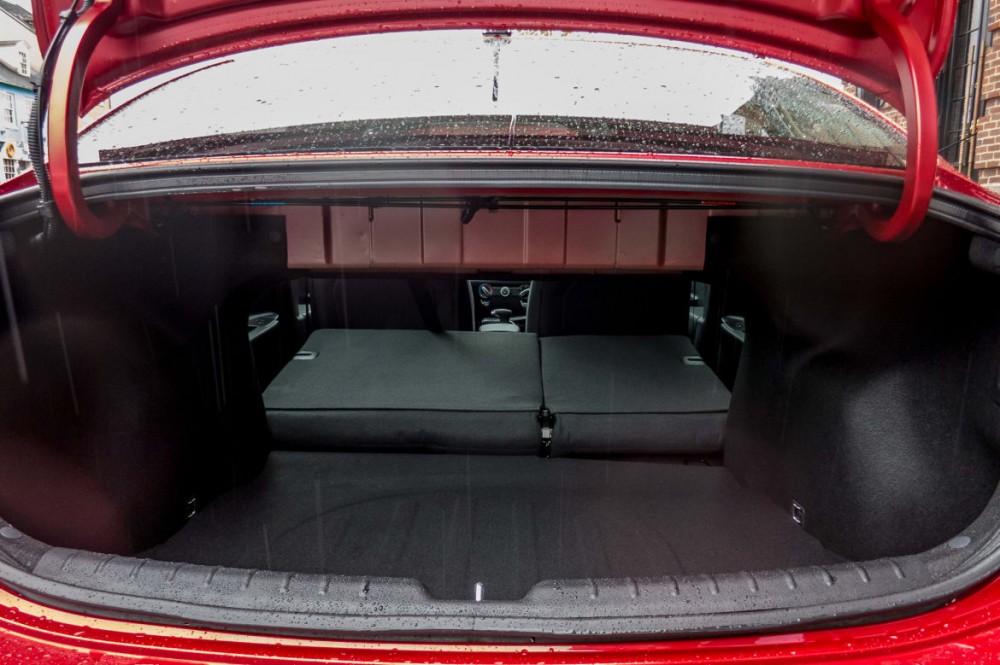
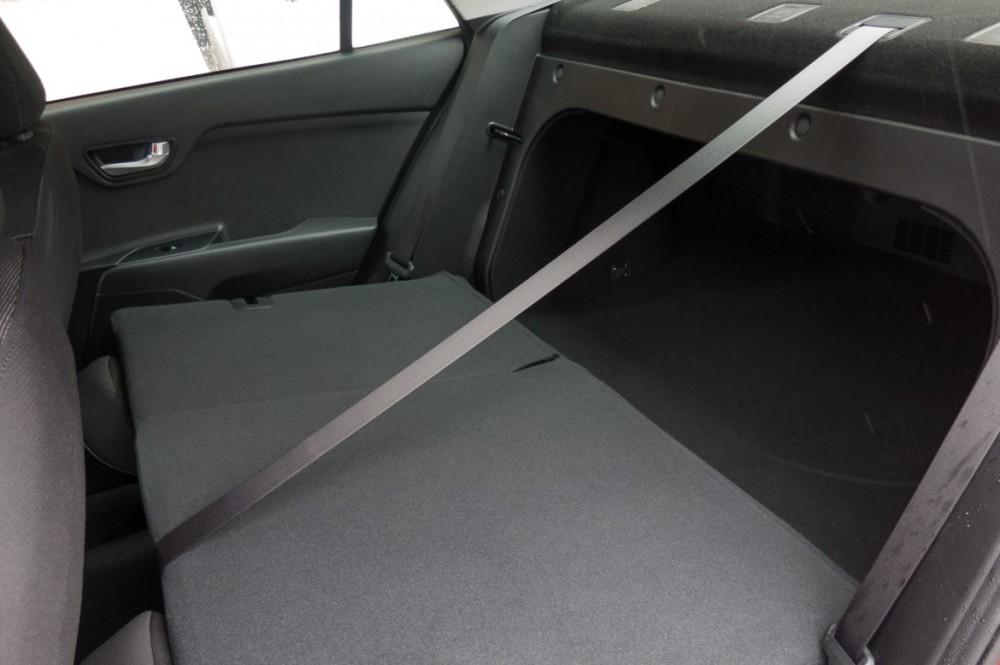
If maximum cargo-hauling ability is a top priority, however, know that the Rio (along with most subcompact hatchbacks) doesn't come close to the Fit's class-above 52.7 cubic feet of space with the seats folded, not to mention it's Swiss Army-knife configurability, with a rear seat that flips up and a seatback that folds down, plus a front passenger seat that can recline flat.
Trunk space in the sedan is 13.7 cubic feet. (Note that that's not directly comparable to the hatch's rating because the measuring standard is different.) That's competitive with subcompact sedan rivals and only about a cubic foot less than the Rio's bigger compact sibling, the Kia Forte. The sedan's S and EX trims have a 60/40-split folding rear seatback to add cargo space. The backseat in the base sedan does not fold.
Shop Carefully for Tech Needs
The rule for tech features in subcompact cars is to never assume they'll be there — even relatively common technology. The base Rio LX is no exception, offering a 5-inch display, AM/FM/satellite radio capability, USB and auxiliary ports, and 12-volt power, but no Bluetooth technology, no backup camera and no keyless entry. Moving up to the S adds those features, plus USB charging for the rear seat, though not smartphone integration.
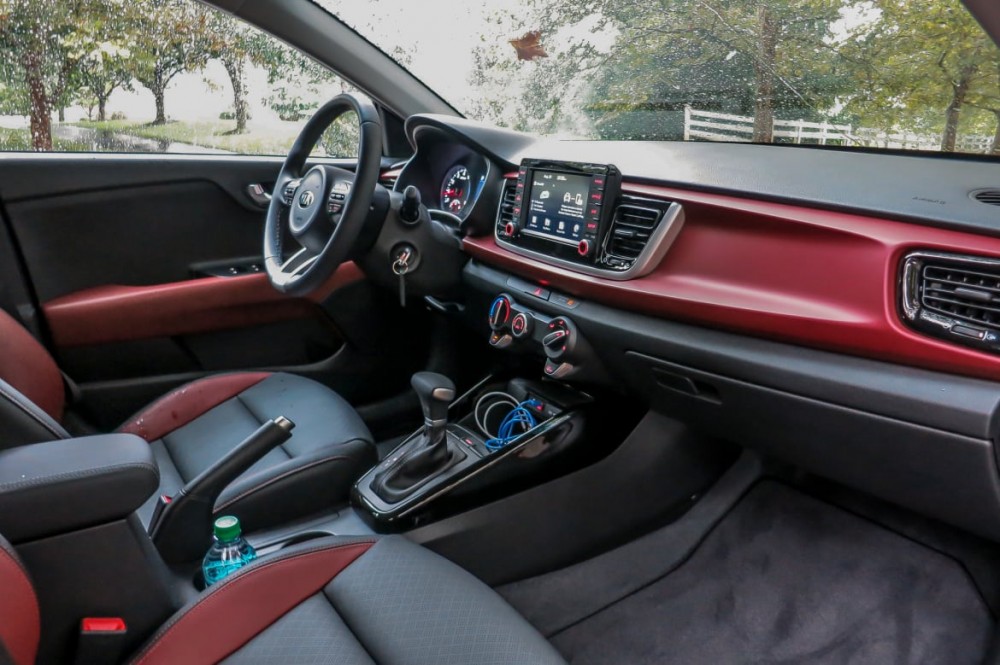
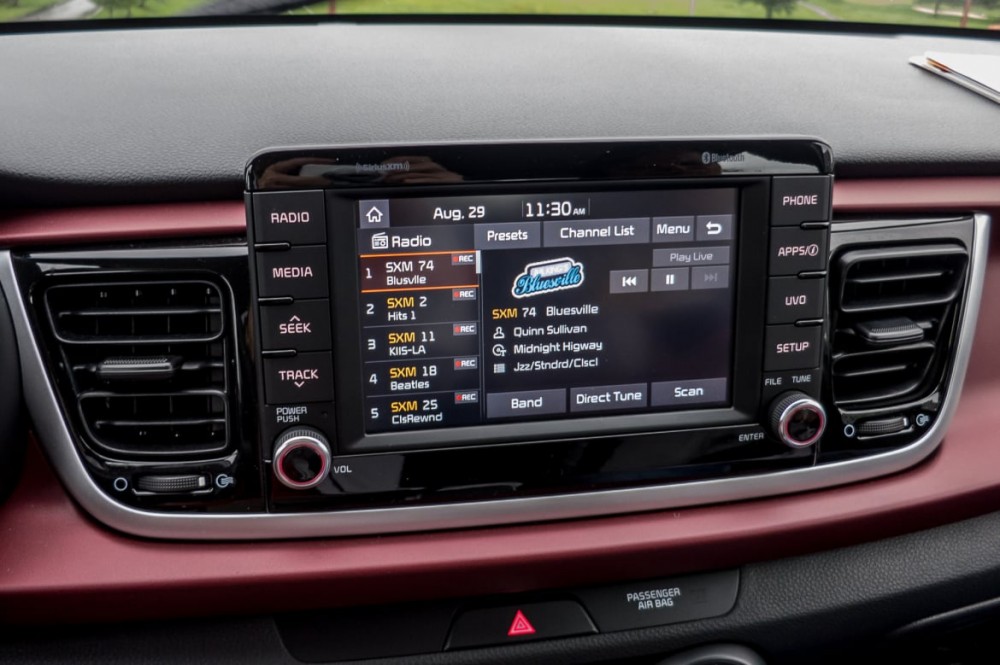
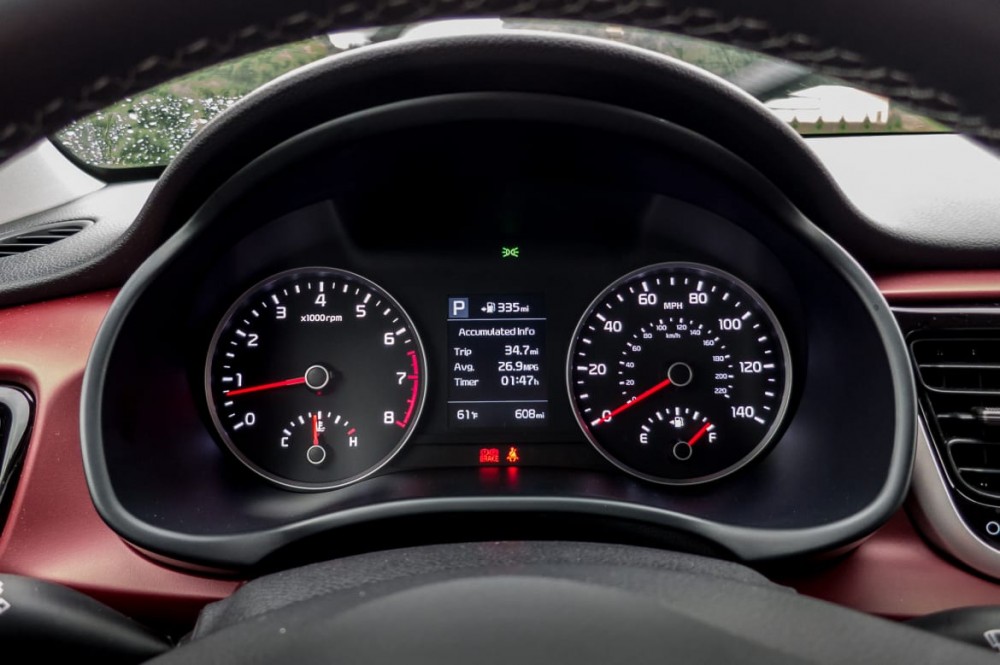
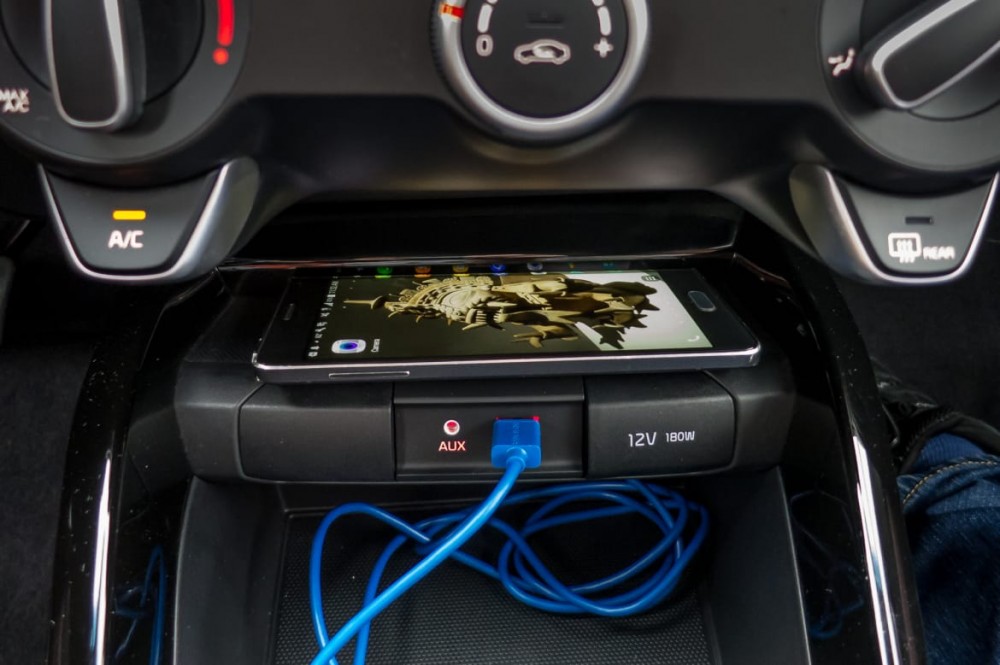
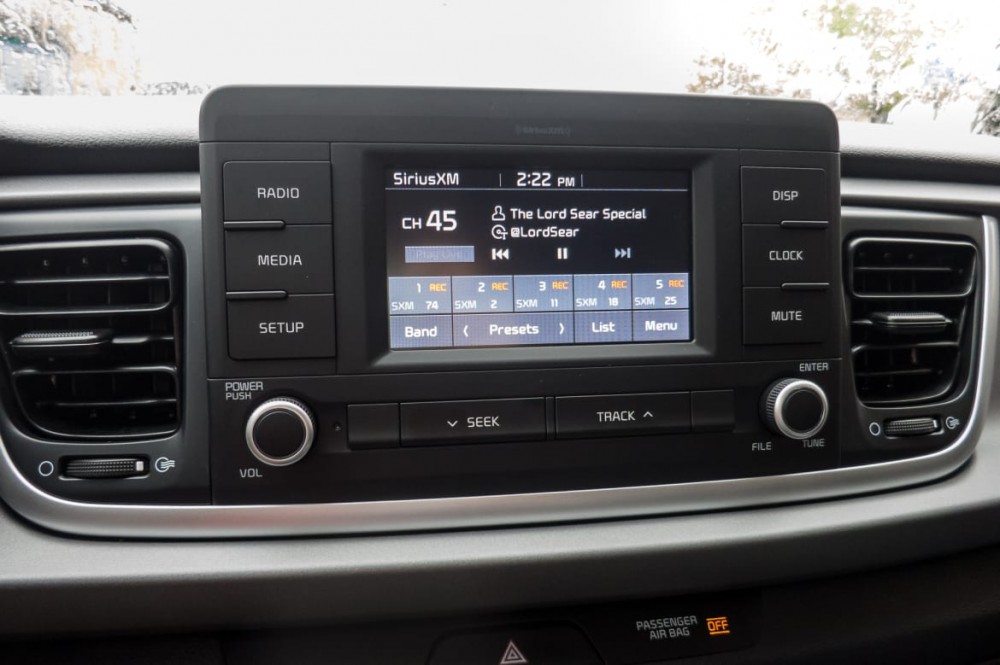
The top, EX trim, however, weighs in with a crisp, good-looking 7-inch touchscreen that sits tablet-style atop the dashboard at a height that's easy to see and reach. It's powered by Kia's latest user-friendly UVO infotainment system, which is fast and includes Apple CarPlay and Android Auto integration as well as Kia's UVO app-based services. Built-in navigation is no longer an option, but the system does have a pair of tweeters for decent six-speaker audio. The center console also includes a very convenient, soft-surface shelf above the connections to stow your phone while you're on the road.
Safety
The 2018 Rio does not yet have crash-test ratings. Kia officials said it has added more high-strength steel and a revised structure to target top safety ratings in Insurance Institute for Highway Safety and federal crash tests, though achieving those has generally proved difficult for cars this size. The 2017 Rio got the top rating of good in three of IIHS' five crash tests, but rated acceptable in the side crash and just marginal in the small overlap front test. See 2017's ratings here. If the 2018 is tested, its results will appear here.
In terms of safety technology, the Rio — significantly — adds a new low-speed front crash system with automatic emergency braking as standard equipment on the EX trim. Unfortunately, it's not offered on cheaper models. Toyota leads in this technology, having it standard on its Yaris and Yaris iA small cars, and Honda has it in at least an option package on all Fit trim levels.
Value
Every dollar counts for price-sensitive buyers looking for the cheapest ride with a new-car warranty. Kia boosted its value proposition for such buyers by lowering base prices for the improved Rio to more competitive levels. The 2018 manual LX sedan starts at $14,795, down a little from 2017, and the base hatchback starts at $15,095, which is down a lot. (All prices include destination charges.) The 2017 Rio sedan started at $15,060 and the hatchback at $16,390. All Rios come with Kia's five-year/60,000-mile bumper-to-bumper warranty, plus 10 years or 100,000 miles for the powertrain.
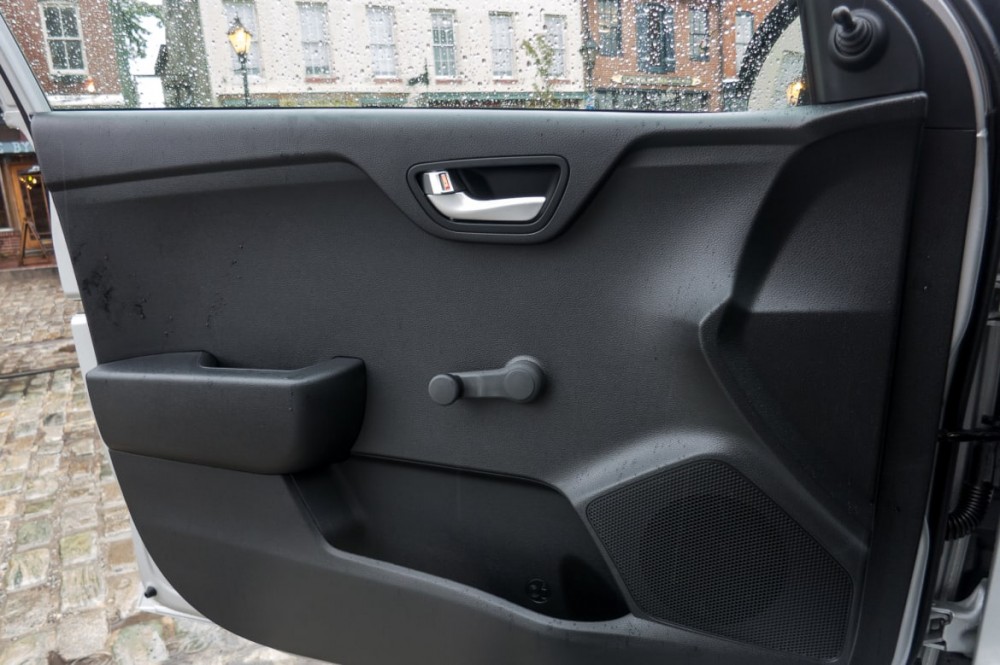
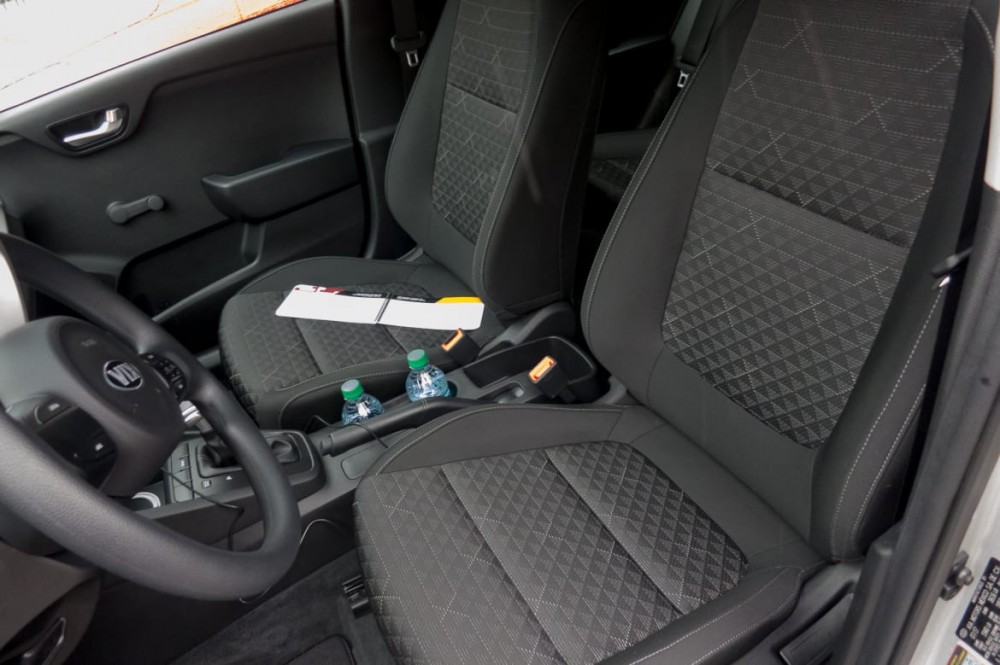
That entry price is important, because, unlike a lot of vehicles, a chunk of Rio sales are the bare-bones model. One Kia official said people even come to dealers asking if they have one without a radio.
Even the lowered 2018 pricing leaves the Rio undercut by an entry-level 2017 Ford Fiesta sedan ($14,535) and hatch ($14,835), as well as a 2018 Nissan Versa sedan ($12,875). But it's below some others, including entry four-door hatchbacks like the 2018 Honda Fit ($17,065), 2018 Nissan Versa Note ($16,365) and 2018 Toyota Yaris ($17,665). A wildcard competitor for the 2018 Rio is a new 2018 Accent subcompact coming from its corporate cousin, Hyundai, though Hyundai has dropped the hatchback and will offer only a sedan.
The Rio's value for its price actually rises versus rivals as you climb up its trim levels. The more attractive new S trim, which adds such basic features as power windows, a center bin and armrest, and a backup camera, starts at $16,995 for the sedan or $17,295 for the hatch. The top-level EX — well-equipped with a 7-inch multimedia system, nicer upholstery, safety tech and other features — starts at $19,295 for the sedan or $19,595 for the hatch. There are Rio rivals that are better for specific needs, such as having performance options (Fiesta) or SUV-like utility (Fit). But the Rio holds its own as a good combination at its price of styling, a decent driving experience and cabin comfort.
The Rio's toughest competition for value, however — at least for more adventurous buyers — may be Kia's own tall and boxy 2018 Soul, which has similar urban parking dimensions, more rear-seat space and more utility, plus a dose of funkiness, starting at just $16,995.








